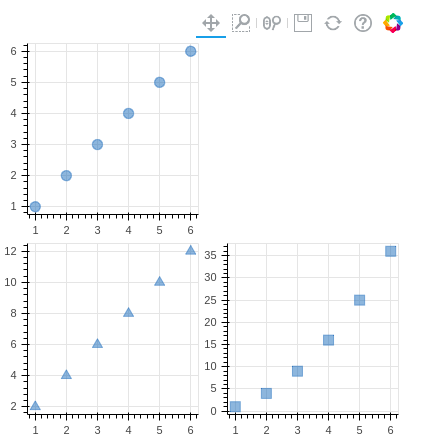

Python bokeh tutorial playlist full#
Full functionality and interactivity should be available right in the browsers(not desktops).Emphasis should be on data of any size not coding.Some of the important goals of Pyviz are: The existing Python Data Visualisation system appears to be a confusing Mesh. So how do we get our job done? PyViz may have an answer. In short, there are a lot of options and it is impossible to learn and try them all or maybe, get them all to work together. There are certain features in one that is better than the other and vice versa. In fact, there isn’t a single visualisation library which can be referred to as the best one. There are some which work well with large datasets while there are still others which mainly focus on 3D renderings. Some libraries like Matplotlib are used for initial basic exploration but are not so useful for showing complex relationships in data. And if you use Python for your analysis, you ought to be overwhelmed by the sheer amount of choices present in form of Data Visualisation libraries. If you work with data, then Data Visualisation is a vital part of your daily routine. This does not require a bokeh server.The purpose of visualization is insight, not pictures. Lines.visible = (1) įreq_slider.js_on_change('value', callback)Ĭheckbox.js_on_change('active', callback2)Ĭos(kx) and a sin(kx) functions can be turned on and off using the checkboxes. # create a slider and a couple of check boxesįreq_slider = Slider(start=0.1, end=10, value=1, step=.1, title="Frequency")Ĭallback = CustomJS(args=dict(source=source, freq=freq_slider),Ĭallback2 = CustomJS(args=dict(lines=line_renderer, checkbox=checkbox), Source = ColumnDataSource(data=dict(x=x, y=y, z=z))įig.line('x', 'y', source=source, name=name_lst),įig.line('x', 'z', source=source, name=name_lst) Here is a slightly modified version of mosc9575's solution code: import numpy as npįrom bokeh.models import CustomJS, Slider, CheckboxGroupįrom otting import ColumnDataSource, figure, show Options=, callback=callback)įor people still looking for this. Multi_select = MultiSelect(title="Lines to plot:", \


P.line('x', 'y2', source=source, color='red', alpha=0.5)Ĭallback = CustomJS(args=dict(source=source), code=""" P = figure(width=500, height=250, x_axis_type="datetime") Ticker = TextInput(title='Ticker Symbol',value='IBM')īutton=Button(label='Lookup',button_type='success')Ĭb_group = CheckboxButtonGroup(labels=,active=) #-| bokeh serveįrom bokeh.io import curdoc,output_file, showįrom bokeh.models import ColumnDataSource I didn't try it yet but I'm sure the legends would still show the invisible linesĪpologies for duct tape code. I'm only modifying the line visibility and not the source.
Python bokeh tutorial playlist how to#
I don't know how to make it work in an HTML output. This solution only works with bokeh serve. I was trying to figure out how the checkboxes worked and I stumbled on your question. This is obviously a late reply but I'm currently trying to learn python and bokeh to hack out some sort of data dashboard.


 0 kommentar(er)
0 kommentar(er)
